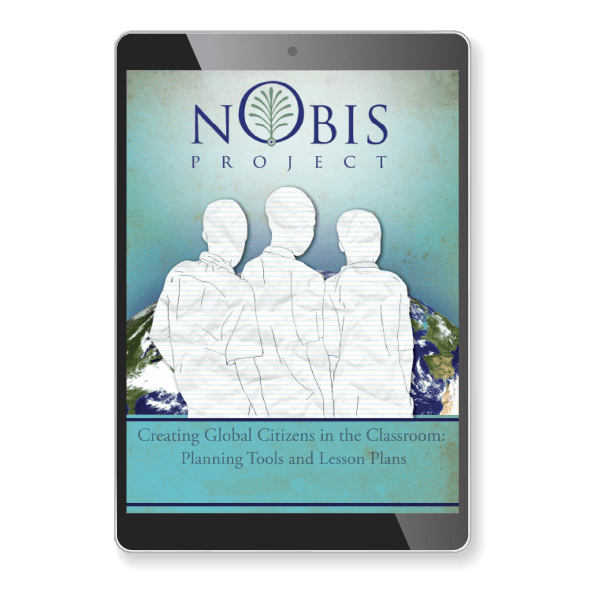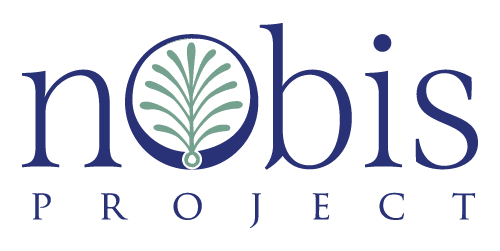Community-Based Memory Project
Lesson Plan
Grade Level: 3-12
Topics:

Community-based memory projects or community-based archives provide opportunities to gain both broader perspective on a community issues or experiences and personal perspectives on collective history. Community -based memory projects provide a critical opportunity for communities to give voice to its members and collect primary source materials. Students will engage in a process that promotes and enhances interpersonal and intercultural skills in students.
Timeframe:
3-5 sessions
Overview
As citizen historians, students can be pioneers or partners in building community-based archives, soliciting and documenting personal perspectives on collective experiences and local histories. By seeking out community voices, students have the opportunity to build relationships with community members. As they gain insight on lived experiences, they enter a process of active listening and develop empathy as they internalize the stories and recognize the perspective of others. While curating personal narratives and memories, students become community storytellers, preserving and expanding community knowledge while promoting understanding within the community. Students will engage in a process that promotes and enhances interpersonal and intercultural skills in students.
Students will help design a community-based memory project to collect stories and perspectives from community members related to a significant event, issue, or shared experience. Students will conduct background research, work to define the community, promote participation, curate memories, present, and reflect.
Essential Questions:
- How can personal experiences add depth to a collective story?
- How can we take a role in documenting multiple perspectives on a local history or a local event?
- How can students use digital storytelling to promote and serve a local community
- Modified for older students: How does individual perspective reinforce or negate a collective story?
Lesson Objectives (Students will):
- Learn personal perspectives in a collective story or event.
- Practice interview skills and digital storytelling techniques.
- Create or Contribute to a memory based community project.
Materials:
- Site specific resources based on desired theme and content of the project
Terminology/Definitions
Collective Identity
History provides individuals and communities with a sense of identity through their understanding of a shared past. In this way, history shapes how people identify and interact with one another, often in ways of which we are not aware.
Procedures
Part I: Developing a Purpose and Scope of the Project
Facilitator will begin by guiding students in collaboratively developing a purpose and scope for the project:
Identify the story
- Facilitators may have in mind the story, community, or historical event that will be the focus of the project. Facilitator can present the story with a guided reading, historical document, or even one person’s perspective on the event. If applicable, the facilitator can ask students to journal or share about their own recollection of the story.
- Facilitators can guide students in identifying the theme of the collective story that they intend to capture. Collective stories and histories could include community or global experiences or events, current or historical topics, or critical issues.
- Facilitators should help students justify the purpose of capturing this story. Why is it important to document multiple voices and perspectives on this story?
Conduct background research on the story
- With guidance, students can identify and analyze the resources and documents that exist pertaining to the story.
- Students can begin to identify critical voices and perspectives that may be missing from the story or that would help provide a more comprehensive and robust story.
Develop essential questions
- Students should generate a list of potential questions to use as prompts for capturing participant’s stories.
- As a group, develop a rubric for analyzing the essential questions to determine.
- Finalize the essential question or list of questions that will be used as a prompt for the memory collection.
Determine the format
- Determine an appropriate format for documenting stories. How will participants submit stories? Have students analyze different collection formats to determine which would be most appropriate, effective, and accessible for the identified community.
- Some formats that you can consider:
- a community blog or vlog
- a virtual bulletin board
- a social media platform
- a physical collection box
- Determine what additional materials participants can contribute including photo and video documentation, journals or documents.
Establish the time frame
- Establish the time frame for the project. If the collective history is current or in progress, students may consider ways to maintain an ongoing story collection.
- As a group, define the scope and mission of the project in order to clearly articulate to participants.
Part II: Identify and solicit participants
Identify potential participants
- Students will identify potential participants and groups within the community who can give voice to a collective history. Students can begin by interviewing some community members who may have knowledge of the topic.
Solicit participation
- Utilize public forums, listservs, or social media platforms to connect with potential participants. Consider partnering with existing community networks such as a local library, civic organization, or historical society to solicit participation in the project.
- Students should maintain careful documentation of the prospective and active participants in the project.
- Facilitators should emphasize and prioritize inclusivity throughout all stages of the project in order to garner broad perspective.
Part III: Collect stories
- Conduct story collection. Utilize the social and relational networks identified in Part III to disseminate the project.
- Ask participants to identify other potential participants or share about their experience and the opportunity to contribute to the project.
- Students should continue to review and seek out a diversity of voices represented in the story collection throughout the process
Part IV: Share and preserve the documentation
- Determine the most appropriate forum for public sharing of the project.
- Identify ways to safeguard and memorialize the community history such as including the community-memory project in a permanent collection or exhibit.
Closure
- Reiterate lesson objectives through written and oral reflection (e.g. What was learned and discussed?).
- Student assessed with rubric and peer- and self-evaluation of completed assignment.
Modification for Intelligences
Differentiation through collaboration or individual work. Based on proficiency with research skills, the facilitator can provide research materials or have students conduct the research independently.
External Links / Resources
University of North Carolina
Creating and Growing Community-Based Memory Projects
Lesson plan developed by Nobis Project. All rights reserved.
